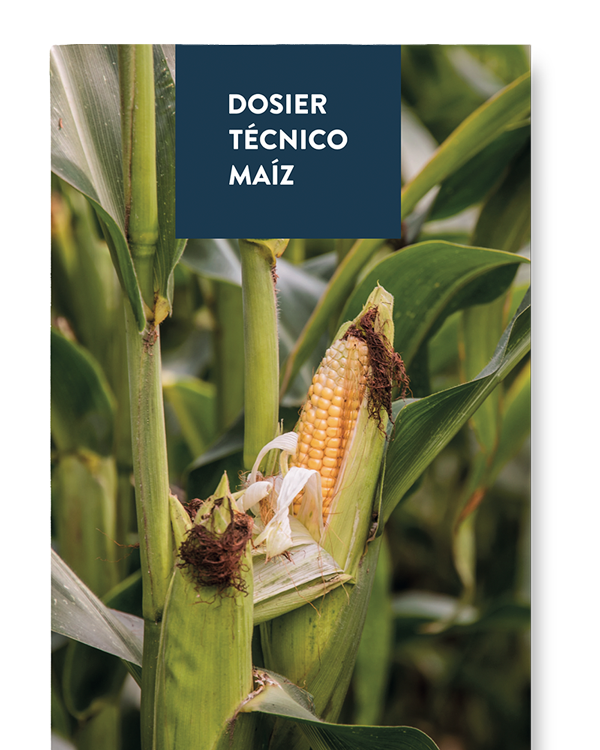Improvement in emergence
• Increase in the number of plants/ha due to decreased formation of a superficial crust. Modern corn hybrids are planted at high densities following the specifications of the seed producers. A significant loss in emergence of plants equivalent to 7 ha will irreversibly limit the production potential of the plot.
• Increase in the activity of germ cells in seeds, ensuring a high percentage of emergence and good root development.
• Increased availability of nutrients. The usual violet tones of the seedlings in early sowings are a symptom of a lack of phosphorus due to retrogradation.
Optimisation of crop development
• Optimal conditions for root development, due to the formation of a granular structure in the soil, preventing compaction and root suffocation.
• Reduction of water stress, by increasing the Available Water Capacity (AWC) of the soil. This is a critical factor in flowering, at which time water stress can cause large production losses.
• Balanced development of the aerial parts of the plant by combining an adequate physical and chemical environment to express its maximum production potential. The plants have a well-structured soil together with the necessary nutrients and water. This effect is achieved without the drawbacks of excessive nitrogenous fertilisation, such as the fall of the plant or ear due to an unbalanced development of the aerial part.
• Reduced salinity stress. By increasing the osmolyte proline, dehydration of the cell and degradation of the cell membrane are prevented.
Increased crop profitability
• Minimisation of the deep percolation of irrigation water. The energy cost of pressurised irrigation water is one of the highest for the crop. Minimisation of water losses increases the profitability of the crop in addition to increasing production.
• Reduction of nutrient leaching through two routes of action. The increase in the Cation Exchange Capacity (CEC) of the soil multiplies the retention capacity of nutrient cations through the solid phase of the soil. The increased water holding capacity increases dissolved nutrients that can be stored by the soil. Of special importance is the fact that the nitrate ion is always in solution and never in the solid phase of the soil. Thus, any amount of water penetrating deeply after the application of nitrate will take this fertiliser away from the reach of the roots so common in the cultivation of corn.
Increase in production
• The optimal development of the crop due to the favourable physical and chemical conditions of the soil lead to production increases without increasing cultivation costs.


